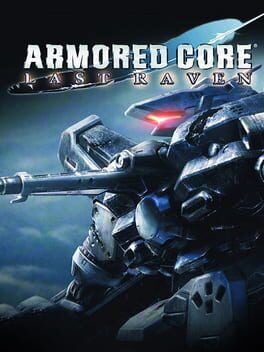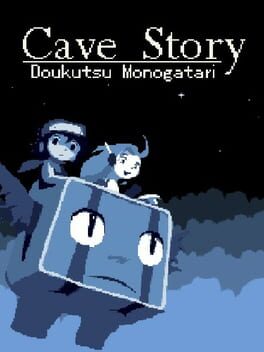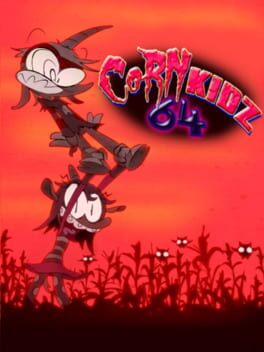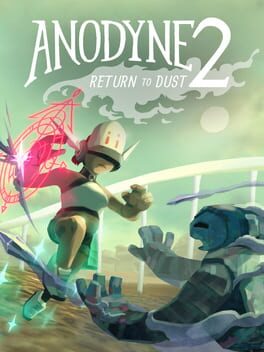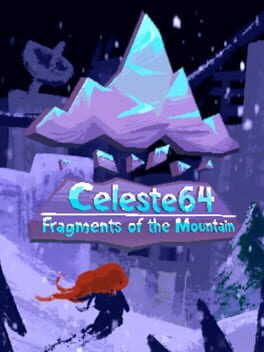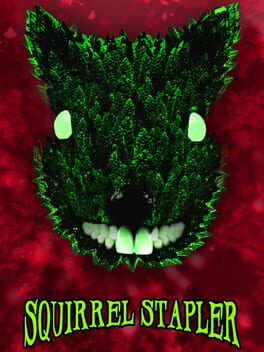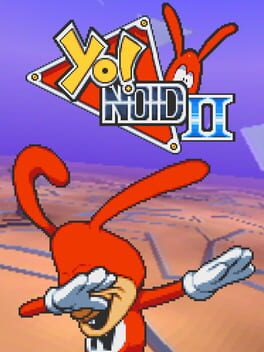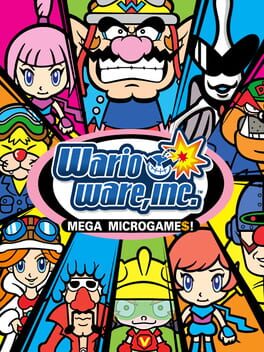DeltaWDunn
Gotta love the Glove.
I'll only include one version of each game I play, usually the vanilla version, so long as they're the same quality wise. For instance, I've played both Okami and Okami HD, but I'm only including the original because the games are basically the same. However, for Super Mario 64 and Super Mario 64 DS, there's two separate entries because they are different games with different strengths and weaknesses.
Anyway, I love 3D Platformers and am generally playing older games as opposed to new ones. I'm open to most games, but I'm not huge on Roguelikes, Roguelites, Rogue Premiums, and whatever else you wanna call them.
I'm active on Myanimelist and Letterboxd.
Badges

GOTY '23
Participated in the 2023 Game of the Year Event

Gone Gold
Received 5+ likes on a review while featured on the front page

Trend Setter
Gained 50+ followers

Elite Gamer
Played 500+ games

Well Written
Gained 10+ likes on a single review

Adored
Gained 300+ total review likes

Pinged
Mentioned by another user

Shreked
Found the secret ogre page

Loved
Gained 100+ total review likes

GOTY '22
Participated in the 2022 Game of the Year Event

2 Years of Service
Being part of the Backloggd community for 2 years

Popular
Gained 15+ followers

Donor
Liked 50+ reviews / lists

Best Friends
Become mutual friends with at least 3 others

On Schedule
Journaled games once a day for a week straight

Organized
Created a list folder with 5+ lists

Listed
Created 10+ public lists

Roadtrip
Voted for at least 3 features on the roadmap

Noticed
Gained 3+ followers

Liked
Gained 10+ total review likes

Gamer
Played 250+ games

GOTY '21
Participated in the 2021 Game of the Year Event

N00b
Played 100+ games
Favorite Games
673
Total Games Played
010
Played in 2024
036
Games Backloggd
Recently Played See More
Recently Reviewed See More
This review contains spoilers
The game remains great, and even occasionally brilliant. It follows Nova, who shrinks down and cleans dangerous nanodust from the insides of people. This cleaning saves people from corruption, and Nova moves on to help other people in need. That’s how it starts at least; The plot soon becomes an allegory for faith, structure, and purpose, where Nova gains more perspective on nanodust and the greater world. Combine this with mix of 3D exploration and top-down dungeons, sprinkle in some quirkiness, and add a dash of progressive themes, and that’s basically Anodyne 2. Now, this may seem akin to many indie games: games that mean well but execute their concepts confusedly and amateurishly. Honestly, that’s how I’d describe some other Analgesic’s games. However, this game nails what matters most. I’d be lying if I called the 3D exploration incredible, as it’s mostly carried by atmospheric, alien locations. Optional collectibles and fun character interactions don’t make up for the lack of environmental interaction and compelling puzzles or platforming. Even as an overworld for the top-down dungeons, the 3D world feels far too sparse given the breadth of the environments. The car transformation and late-game fast travel somewhat rectify this issue, but only somewhat.
The excellent top-down Zelda-esque sections do the heavy lifting here. The Zelda comparison isn’t entirely apt, as you don’t get a bunch of new items throughout the games. No, Nova mainly just uses a vacuum cleaner, sucking up items and enemies a la Kirby’s Dream Land (Side note, going from a broom in the first game to a vacuum cleaner here is funny). The game gets a lot of mileage out of this, constructing really fun puzzles and combat scenarios. The efficiency with which this game establishes and expands on concepts surprises me; It does a lot with little, and the game respects the player’s ability to figure mechanics out for themselves. The initially simple dungeons with straightforward mechanics and stories eventually give way to more wacky and varied levels, with one being a parody of classic RPGs. This high-quality design is accompanied by a narrative justification for the shift from 2D -> 3D: Nova is “Shrinking” the resolution of the game while she shrinks in size. Tons of indie games mash two genres together, but few make sense of such a combination the way Anodyne 2 does.
I have a few benign complaints about the 2D gameplay. The lack of difficulty hurts my enjoyment a bit. I’ll assume the leisure with which I finished the game is due to it being a second playthrough (And also me being good at videogames). Regardless, the plentiful checkpoints mean I never felt much of a threat, even in the rare occasions when my health did diminish. The other issue I have is more of a missed opportunity related to the titular dust. Dust gates progression, but you can’t really hold that much, and depositing it requires backtracking. Again, this is usually merely benign (Unless you go for the ‘bad’ ending, where you need to collect tons of dust), but having that dust just sit there made me think about how it could’ve been used for other gameplay purposes. The concept of channeling dust is mentioned, but the gameplay implications of this were extremely minor. An extra use for dust could’ve been really interesting, especially considering how often it sits in the player’s tank.
The story makes no effort to hide its messages of seeking purpose and meaning, but I consider it a compelling story regardless. The narrative is supported by some good character progression and decent twists. Nora initially sees the benefits of structure and believing in an inherent purpose, but later realizes finding your own purpose can also be fulfilling. In the ‘good’ ending, Nova rejects her purpose given to her by the Center, a representation of Leaders\Religion. It’s a pretty solid story overall, although I admit that most of what I enjoy comes down to specific concepts and moments. One of the highlights comes midway through the game. Palisade, a mother figure of sorts to Nova, creates a playground for Nova and dies soon after. Eventually Nova finds this playground and assumes that it’s meant to train her. The concept of having fun is alien to her; everything has an inherent meaning, even random dice rolls. This moment does a great job of characterizing Nova and representing the game’s themes
One initially inconspicuous section compels me more than any other in the game. You meet a ‘bugged’ NPC, and upon shrinking down and entering this NPC, you see the story of Nora, who exists in what seems to be the real world. In this section, the game implies that the main story is simply Nora escaping the problems of her life by playing a videogame, only exercising freedom in fantasy. This compelling extra layer looks at the escapist nature of games, and the happy ending of the game now seems to almost be a red herring.
Unfortunately, the dialogue often undercuts what should just speak for itself. Nora starts talking about minimum wage at one point and I’m just sitting here thinking, “Ok, sure, but does this need to be here?” There’s one section of the story that’s conceptually excellent: Nova tries to help a rock guy who blindly commits to a purpose and pays the price. This sets up the idea that blindly following a purpose isn’t always a good idea, which the game later expands on. However, the dialogue hammers this idea in way too hard. Even worse, this dialogue can’t be skipped. The game literally puts up progression gates that only go down once you talk to all the people. This would be obnoxious for even the best writing. The game takes the ‘Tell don’t show’ approach far too often, and this approach often hurts otherwise impactful story beats. Excess aside, the dialogue can be hit-and-miss, regardless of if it aims for drama or comedy. Often it leans too far into self-indulgence and quirk, briefly becoming that indie game stereotype I described at the beginning. The best jokes and story beats are told visually. There’s some graffiti that reads “Environmental Storytelling” earlier on. In the aforementioned JRPG Parody, the game makes fun of the way staircases are presented in Dragon Quest games. There’s an announcer that’s a spider named ‘Announci’, a joke I only picked up on this playthrough. None of these gags are forced on the player, which means even the occasional annoying dialogue from an NPC is bearable. I suppose this strength of optional content and dialogue fits, since Anodyne 2 explores free will and finding your own purpose…
These themes of freedom and finding purpose are characterized on a gameplay level by Metacoins. Metacoins can be collected in the 3D Areas (And occasionally in 2D levels), and you can buy various items with them. However, what if you wanted to get all of them? There’s not much of a reason, but what if you just really wanted to? Well, you gotta look hard. In fact, you have to go beyond the bounds of reality. Many of these coins are hidden in walls and out of bounds. To get them, you have to glitch the game. For a game going against what you’re ‘supposed’ to do, this concept somehow balances being both logical and insane. This optional sidequest that appears halfway through the game remains the best part of the 3D gameplay. Make of that what you will. Despite my love for this game, I never ended up getting every single coin. I looked online too, but considering this game’s obscurity, I could find little. Honestly though, I love the sense of mystery in this game. Metacoins aside, there’s a lot of weird optional stuff here, much of which reveals itself in the post-game. Nowadays I try to avoid guides for games as much as possible, and I think this game’s sense of mystery may have contributed to this habit. In that spirit of mystery, I won’t spoil anything about what the post-game has to offer.
Analgesic spoiled us with the audiovisuals though. This game released around the time low-poly visuals were making a resurgence, and I do enjoy the visual style despite some issues. Some locations look great, but others are muddled and dull. Could this have been an intentional homage to the actual visuals of the time? Maybe, but if so, the game’s very selective in its faithfulness. It’s also worth noting that cutscenes, assuming they don’t play out with still images or in dialogue, lack pretty much any unique animations; Characters will stand in their idle animations and talk. Yes, this game was made by a small team, but the lack of animation distracted me nonetheless. The 2D sections generally look better on a surface level, and the visuals often nicely tie into a character’s psyche. However, 2D or 3D sections, the music always resonates with me. The audio balances style and substance beautifully; I can tell if a song is from this game, but the compositions have a great range regardless.
Replaying this game was fun. Not just because it’s a great game, but also because it makes me think about how I’ve changed. Looking back, I can’t help but wonder if part of why I identified with this game’s story so much was the fact that I struggled with what my purpose should be as well. I played this game the same month I graduated from High School. I started college months later, not necessarily because I had an idea of what I wanted to do, but because that’s what people expected me to do. For the same reason, I considered going into a medical career. Having something present that dilemma of purpose probably vindicated me. Nowadays though, I have a much better idea of what I want to do with my life. I enjoy learning about Math in College, I’m more confident in myself, and I’ve even made friends and stuff. I’m not perfect of course, but who is…
I’ve never really bought into the notion that certain experiences with art are invalid. Even if a game was made with a specific audience in mind, people outside that audience deserve a voice. Good stories should at least be entertaining or compelling for people who don’t personally relate to the main character. Anodyne 2 certainly targets an audience, but it also houses good gameplay, an interesting story, and great music. This game isn’t a 10/10 masterpiece, and I’m hesitant to rate it 9/10 either. However, even three years later I had a great time, and that’s enough for me. My numerical rating doesn’t matter much at the end of the day; I can’t imagine this review would actually convince many people to play the game. It's being posted on a fairly obscure website by an even more obscure user. It’s basically a useless review. However, I wrote it because I wanted it to exist. Does this review really need a purpose? That question resonates even more for my review from three years ago. That poorly written, dated review doesn’t really serve a purpose, but it represents who I was back then. Shouldn’t that person, flaws and all, still be allowed to exist? I think so.
Wario Land 4 is one of my favorite games of all time, and the overall Wario Land series is great for what is basically a Mario spin-off. It uses an exaggeration of Mario, an icon of gaming, as a vessel for a subversion and exaggeration of tropes of 2D Platformers and games in general. What’s so interesting about WarioWare is how despite its similarities, it’s an extremely different game. WarioWare is more overtly about games, but I don’t think this means it’s entirely without subtext. A very surface-level look of this game would say that it’s composed of titular microgames that, for the most part, are completely different from each other and very simple. I complain a lot about unnatural variety and minigames, so I should hate this game.
However, there’s a little more to the story, and I mean that literally. Microgames are presented as solutions to the current character’s problem in every stage, but... why is this? Why does picking your nose help Mona escape from the cops? Yes, many games have stories that are clearly excuses for gameplay to happen, but most try to provide some kind of context or reason why you’re doing what you’re doing. When I play Donkey Kong Country, I know that I’m going through these levels because the banana thief K. Rool is at the end of my journey, I know the bananas along the way were likely dropped by him, and I know the enemies are his subordinates. And while I do like many of the characters in the game, the story is basically just there to provide that context and sense of cohesion.
WarioWare is a game without context or cohesion, and this is actually its greatest strength. The most context for microgames is a single descriptive word of your goal, and the only cohesion is some kind of basic theme of the microgames like “sci-fi” or “nature”. Even artstyles change between games, as one may go for realism while another is retro-game styled, with everything in between. All this leaves is extremely short and simple games with extraneous details stripped out. You need to figure out your goal and execute it all within a few seconds. It’s a novel idea, but the way WarioWare executes the fine details is what elevates it to greatness. As a set of Microgames goes on, the pace increases and twists are thrown into microgames which you previously played, and there are different variants of these microgames, meaning that even when you become more familiar with one microgame it can still surprise you. It also helps that while different in most ways, many microgames have some level of consistency for the less forgiving aspects of a microgame, and the more unique games are often focused on that uniqueness. At the end of a stage, you have a ‘boss’, which is a little more complicated than other microgames, and these are still simple but have a little more to them. One’s a little shmup, one’s basically Punch-Out!!, and they feel fitting to top off the smaller challenges. It helps that even after these bosses are defeated, you can return to a stage and enter an endless mode where you can try to top your high score, leading to tons of replay value. It’s all an unexpectedly exhilarating playing experience.
Honestly, my main issues stem from the fact that while microgames are mostly consistently great, there’s a few exceptions. Some don’t feel doable first time around, whether it be for an inaccurate opening word or aspect of the game that isn’t readily apparent. Some detail of controls may not be clear until you try the microgame once, which makes some harder than others when playing for the first time. Also, a lot of these microgames are just some kind of timed button press, which is slightly disappointing. Really though, this is still a great game. Through its sheer lack of consistency and theming, the game feels ironically unique and iconic. I’m definitely going to try more of these games, but I’m not sure if they’ll really hit the same way this one did. If there’s one thing that this game taught me, the feeling of trying and solving something for the first time is core to games. Replicating that feeling in a sequel is a tall order, but if there’s any gaming icon I’d expect to pull it off, it would be Wario.


